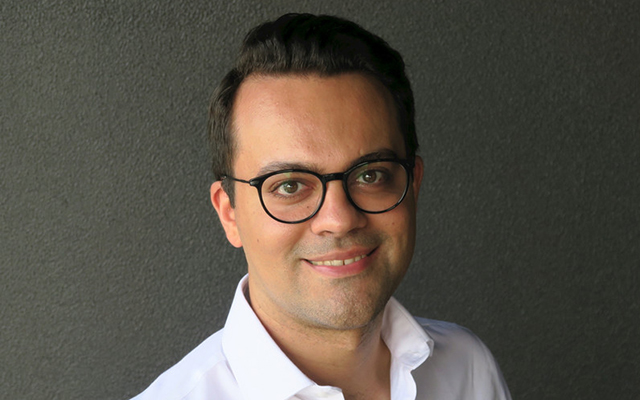CIES graduate Dr Mahdi Babaee wins national award
 CIES is delighted to congratulate our recent PhD graduate Dr Mahdi Babaee who has been awarded the Concrete Institute of Australia’s National Engineering Bursary Award for 2019.
CIES is delighted to congratulate our recent PhD graduate Dr Mahdi Babaee who has been awarded the Concrete Institute of Australia’s National Engineering Bursary Award for 2019.
The Bursary is a biennial award made to post graduate students studying engineering, chemistry, materials science, building science and other relevant subjects which contribute to the research knowledge base of concrete in Australia. The award is made for excellence in thesis work on concrete and cement based products and processes.
Dr Babaee graduated from UNSW in 2018 following the completion of his thesis entitled “Corrosion of Reinforcement in Alkali-Activated Materials” which was supervised by CIES Associate Professor Arnaud Castel and Associate Professor Hamid Vali Pour.
Babaee’s research work was undertaken as part of the current CIES and industry pursuit of more sustainable and durable concretes.
David Millar, Chief Executive Officer advised that while the quality of the submissions was extremely high, and the Institute’s judging panel found it an extremely difficult task to split them all, they unanimously selected the thesis by Dr Babaee as the winner of the 2019 Bursary.
The award comprises of the following:
- A cash prize of $2,500.00
- Registration to attend the Biennial Conference, and the opportunity to present a paper derived from the winning thesis at Concrete 2019
- The publishing of the paper in the official proceedings of Concrete 2019 and in Concrete in Australia magazine in December 2019
The conference, Concrete 2019, is being held in Sydney at the International Convention Centre at Darling Harbour from 8th to 11th September. The conference will also include the CIA Awards for Excellence Gala Dinner, where Dr Babaee will be officially recognised as the winner of the National Engineering Bursary for 2019.
Mahdi now works in industry where he remains an advocate of employing new sustainable materials in the construction industry. He is well-recognised internationally for his pioneering works on developing low-embodied-carbon concretes such as geopolymers. His published research is significantly influencing models and concrete standards in Australia and around the world.
About the thesis:
The increasing demand for sustainable concretes has promoted the development of a category of alternative binders called alkali-activated binders, including materials described as geopolymers, which are produced by the reaction of solid precursors such as fly ash, slag, and metakaolin with alkaline solutions.
As buildings and infrastructures are aging nowadays, the durability aspects of concrete have become more important than in the past, and despite the acceptable mechanical properties of alkali-activated concretes, there are some concerns over their durability and service life as they were brought into service very recently.
This dissertation aims to investigate various influential parameters involved in the initiation and propagation phases of corrosion of reinforcements in alkali-activated materials, as one of the main causes of deterioration of the concrete structures.
Moisture transport, which influences several other corrosion-related properties such as the electrical resistivity and the oxygen diffusivity after depassivation of the reinforcement, is investigated for a range of representative samples.
Water-vapour-sorption-isotherms were investigated and valuable insights into the pore structure of alkali-activated binders were obtained. The sorption kinetics was studied and the contribution of the nonFickian sorption process was assessed for both aluminosilicate-dominated and calcium-rich binders.
A systematic study of the effect of alkali, calcium, and silicate content on the apparent chloride diffusion coefficients and chloride threshold values of a wide range of alkali-activated mixes were conducted and the results were interpreted in light of the nano and microstructural properties.
Applicability of the electrochemical test methods conventionally developed and used for Portland cement-based concretes was assessed for low calcium alkali-activated concretes, and the chloride-induced corrosion propagation phase was studied.
The effect of alkali concentration in the activator, and the carbon dioxide concentration on the pH drop and passivity of the reinforcement were investigated by modeling the adsorption of carbon dioxide into an aqueous NaOH solution, as representative of the pore solution, and the results were validated against the experimental observations. Finally, the alkali cation leaching which can lead to the loss of alkalinity was also evaluated for a range of alkali-activated samples.



